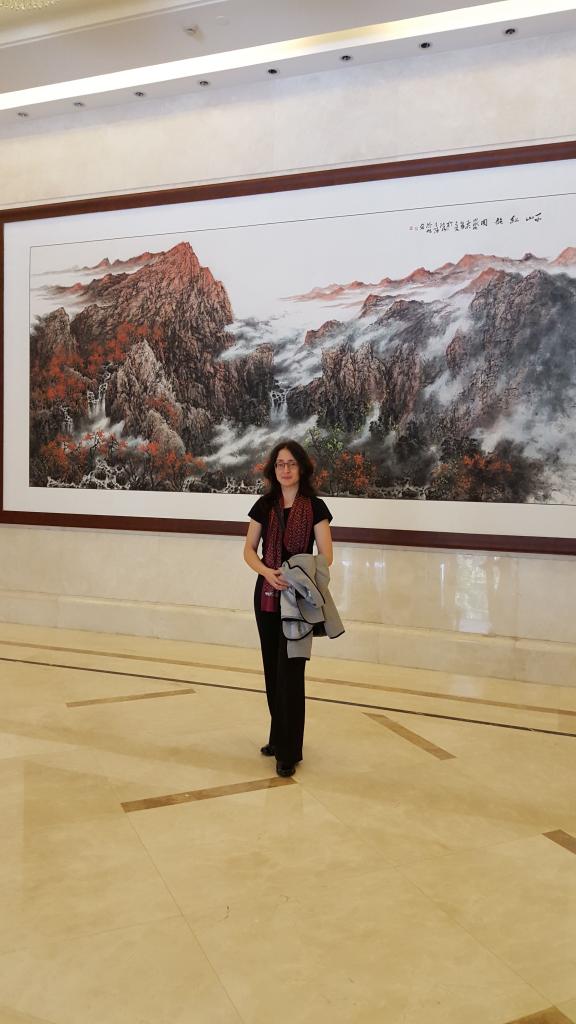China’s Belt and Road initiative seeks to promote connectivity and cooperation between countries, regions and continents. This column outlines some of the potential benefits and costs, in particular raising concerns about China’s growing presence in the Arctic and Antarctic – two regions that are rich in natural resources but where environmental protection is essential for the whole planet.
China is now a major contributor to global communication, transport, and infrastructure development. It is also a key promoter of international cooperation, as underscored by its recent initiatives, including ‘One Belt, One Road’. Its economic and geopolitical rise is a central feature of the globalized world, and its president’s credo is described as the ‘Silk Road spirit’ of ‘peace and cooperation, openness and inclusiveness, mutual learning and mutual benefit’ (NDRC, 2015).
But given its growing role, it is more important than ever that China should not forget environmental concerns, especially in the context of an increasingly interconnected world.
One Belt, One Road has now been relabelled the ‘Belt and Road initiative’, in order to underline that there is no single belt and road, but a multitude of continental and maritime belts and roads. The variable geometry of the Belt and Road initiative is less understood by China’s partners, although it is simple and clear: the initiator offers a generous cooperation framework, which will be jointly developed with partner countries and financial institutions in accordance with common cross-border and regional priorities.
Many countries – though not the United States – are receptive to the Belt and Road initiative, but a number of concerns remain. These include lack of communication and clarity; the lengthy implementation period; the absence of firm commitments on social and environmental matters; the impact of Chinese companies on global competition; and the emphasis on China’s own interests (European Parliamentary Research Service, 2016, Arduino, 2016, Godement, 2015).
In 2049, the People’s Republic of China will celebrate its 100th anniversary. The ‘New Silk Road’ has at its core the objective of developing infrastructure and increasing connectivity and cooperation between countries, regions and continents. It is intended to be a guarantor of peace and stability, in contrast to the current escalation of uncertainty, hostility and terrorism.
Definitely, China is doing a good job, even as its economic objectives merge with its geopolitical ones. According to Cheng (2015) and UNDP-CCIEE (2016), the Belt and Road initiative will cross over 70 countries, and will contribute to diversifying China’s export markets; boosting economic growth, both regionally and globally; increasing the largest Asian economy’s presence in international affairs; diminishing global dependence on the dollar; accelerating the internationalization of the renminbi; and ensuring food and energy security.
Beyond such generally positive outcomes, there are potentially more damaging effects of the Belt and Road initiative on the environment. Since early 2017, international discussions of the Belt and Road initiative have included a new topic: incorporation of the Arctic and Antarctic regions into the New Silk Road. That has generated even more tensions among enthusiasts, supporters, opponents and critics of the largest global project ever proposed by a single country.
China gained observer status in the Arctic Council, an intergovernmental forum, in May 2013, several months before the announcement of the One Belt, One Road initiative. In 2017, China hosted the 40th Antarctic Treaty Consultative Meeting in Beijing, resonating with Professor Hu Angang of Tsinghua University and resulting in his phrase: ‘A Belt, A Road and A Circle’ (Huang, 2017).
There is a clear connection between climate change and new business opportunities in the Arctic, such as oil and gas exploration, mining, shipping, tourism, and fisheries (Masters, 2013). ‘Underdeveloped infrastructure’ is the phrase now used, denoting regions rich in natural resources but with poor connectivity and sparse populations. This must not take away from environmental protection, which, as elsewhere, should be the first priority in the Arctic.
As for Antarctica, at present, a ban on mining and mineral resource activities is in effect until at least 2048 under the Madrid Antarctic Environment Protocol (signed in 1991 and implemented since 1998). According to the protocol, Antarctica is a ‘natural reserve, devoted to peace and science’. China – which signed the Antarctic Treaty in 1983 (24 years after its inception) and the Madrid Protocol in 1991 – seems resolute in supporting the shared and global responsibility for protecting this region.
Consequently, China’s presence in the North and South Poles is accompanied by new variables. All countries must honor a proper environment-economy balance (Brown, 2017). Technological progress can reduce resource pressure and help make this possible, for the benefit of all of us.






